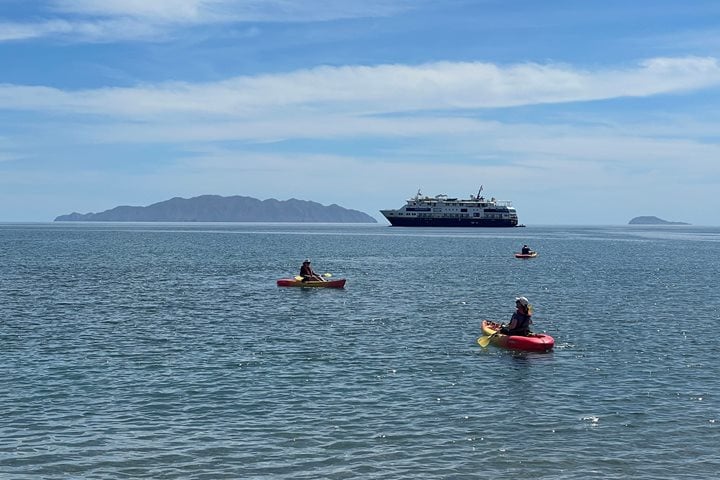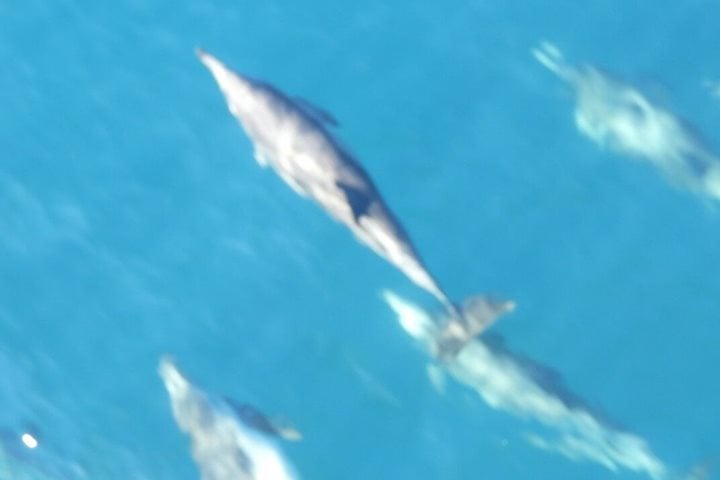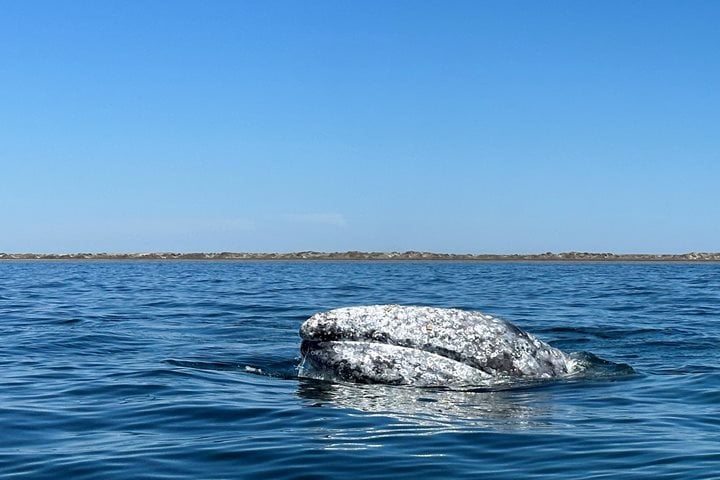Our floating home the National Geographic Sea Bird woke up this morning to a very special sight: the beautiful pastel colors on the Eastern sky casted a gorgeous light over Los Frailes (The Friars), a rocky point that marks the southern boundary of the Cabo Pulmo National Park. The story of Cabo Pulmo is truly a remarkable one. The small commercial fishing community which resided there decided to stop fishing and asked the Mexican government to declare it part of the Mexican network of Natural Protected Areas. The fishermen succeeded and in 1995, the Cabo Pulmo Marine Reserve was created, later renamed in 2000 to Cabo Pulmo National Park. They had a hard time surviving without fishing for a few years, but quickly the park began to show encouraging signs of recovery. More than 20 years later, scientists have documented an astonishing recovery of fish and invertebrate population of more than 400%, the biggest rebound of biomass of any marine reserve on the planet! As we moved away from Cabo Pulmo we enjoyed watching the famous green flash as the first rays of the sun showed above the horizon. What a treat!
The waters off the southern tip of the peninsula are wintering and breeding grounds for humpback whales and we had the good fortune to enjoy watching numerous individuals all morning long. Sometimes groups of several whales thrashed around in tight formations, most likely groups of competitive males trying to get the favors of a female, making for some spectacular displays on the surface.
Around noon, we entered the new marina of Puerto Los Cabos and boarded motor coaches to visit downtown San José del Cabo and go birding at the San José Estuary. We all had a good time, visited the Jesuit mission, a glassblowing factory, and ate some delicious paletas. Then we sailed out again, headed towards Cabo San Lucas and the iconic granite arch at Land’s End, before entering the open Pacific and putting an end to our last day inside Mexico’s Sea of Cortez.







